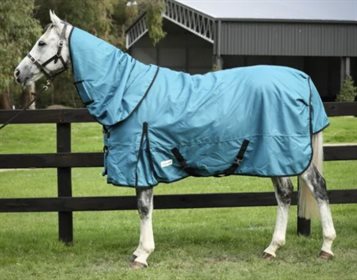Charlotte Dujardin showing a great riding position aboard Valegro.
© Michelle Terlato
By Emma Mathlin
We’ve all seen illustrations of the ideal riding position – a vertical line drawn from the ear down through the shoulder, hip and ankle, with the pelvis in a neutral position. This position is ideal because the body’s centre of balance is sitting over the top of our base of support (feet in the stirrups) – allowing us to use less muscular effort to maintain our balance in the saddle. Any deviation from this ideal posture can lead to a loss of balance and result in a negative impact on your horse.
The type of posture you adopt in your everyday life and work is likely to be the same posture you adopt on the horse. For example, if you spend many hours on a computer or driving in the car, you may have rounded shoulders and forward head posture. Unless you correct this posture daily, you are likely to ride in the same position.
Riders tend to have deviations from the ideal position to either a “slumping” or a “swayback” position to varying degrees. By identifying the posture you tend to adopt, you can train out of the saddle and learn to move towards a more ideal position both in the saddle and in your daily life.
Slumpers have a flatter lower back with the pelvis tipped backwards and the seat bones shifted forwards in the saddle. They may lean the trunk back and have rounded shoulders and a chin that pokes forwards. Your instructor may give you comments like “sit up straight” and “put your shoulders back”.
Swaybacks have an increased curve in the lower back with the pelvis tipped forward and the seat bones shifted back in the saddle. Their upper body tends to tip forward with the lower leg shifting too far back. These riders often hear comments such as “lean back” and “soften through your back”.
Where do you sit on this scale?
Posture scale:
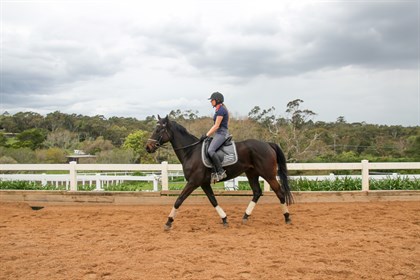
The “Slumper”.
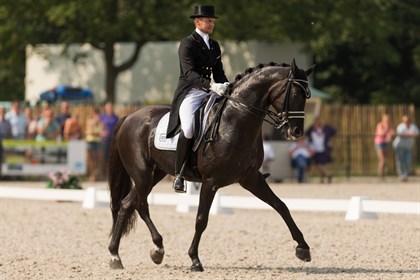
The ideal position.
© Bossiema/Dreamstime.com

The “Swayback”.
In order to achieve the correct position in the saddle, your body must have the movement available in the joints and muscles to achieve the shape required. Any restrictions in movement will make it more difficult for you to achieve the correct position. The first step to correcting your posture is to stretch areas of restriction and then to strengthen areas of weakness.
Slumpers tend to have tightness across the chest (pectoral) muscles, gluteal (or buttock) muscles and hamstrings, with a loss of extension of the thoracic spine (i.e. the ability to sit up straight).
Swayback riders tend to have restriction and tightness in the lower back, hip flexors (area at the front of the hip), calf muscles and ankle joints and a lack of rotation in the thoracic spine (middle of the back). This often leads to jarring in the saddle.
Try the following stretches for your posture type and see if it helps to improve your position in the saddle. Note: Stretches should be done after a warm-up of general activity. Take each stretch to the point of a comfortable stretch but not pain. Try to hold each stretch for a minimum of 30 seconds. Relax into each stretch and remember to breathe!
Stretchers for the slumper
1. Chest opener

Chest opener.
Face into the corner of a room. Lift both arms up and place the hands and forearms on either side of the corner. Gently lean the upper body into the corner until you feel a stretch across the chest and front of shoulders
2. Thoracic extension with a foam roller
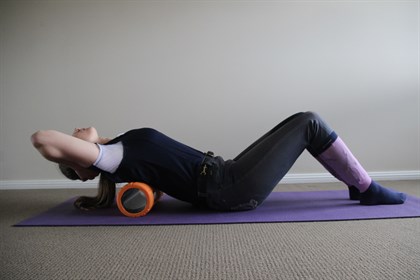
Thoracic extensions with a foam roller.
Lie on your back with a foam roller underneath the middle of your back. If you don’t have a roller, a tightly rolled-up towel will work too. Supporting your head and neck with your hands, slowly lower your head and shoulders towards the floor.
3. Hamstrings
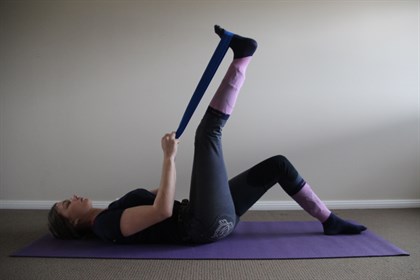
Hamstrings.
Place a belt or stirrup leather around the ball of your foot. Keeping your knee slightly bent, gently draw your leg towards your head until you feel a stretch at the back of the thigh.
4. Gluteals
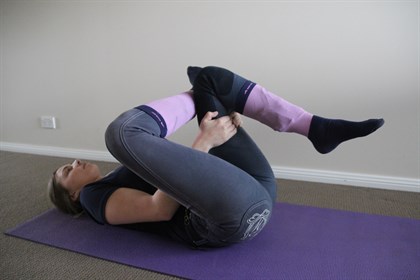
Gluterals.
Lie on your back with knees bent up. Cross the right leg over the left with the right ankle on the left knee. Hold the left thigh and slowly pull the leg towards your head. You will feel a deep stretch in the right buttock. Repeat on the opposite side.
Stretches for the Swayback
1. Hip Flexor stretch
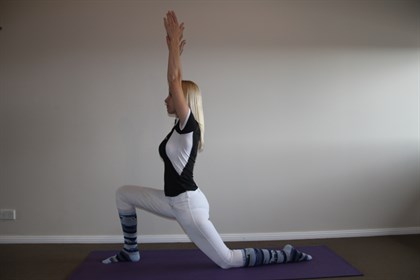
Hip Flexor stretch.
Start in a half kneeling position, tuck your tail underneath you and then slowly lunge forward until you feel a stretch at the front of the back hip. Progress the stretch by lifting both arms up to the sky and bending the upper body sideways away from the back leg.
2. Calf muscle and ankle
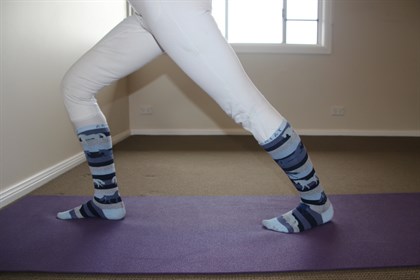
Calf muscle and ankle.
Set up in a lunge position with hands leaning on a wall. Keep the back knee straight, back heel on the ground and back foot pointing forwards. Slowly lunge forwards until you feel a stretch in the back calf and ankle. Repeat on the other side.
3. Lumbar spine
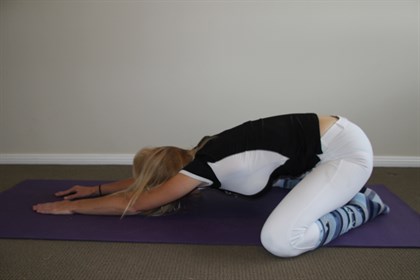
Lumbar spine.
Kneel on the floor then widen your knees, keeping your feet together. Stretch the arms and upper body forward between your knees. You may feel this stretch at the back of the shoulders, through the lower back and in the inner thigh muscles.
4. Thoracic twist
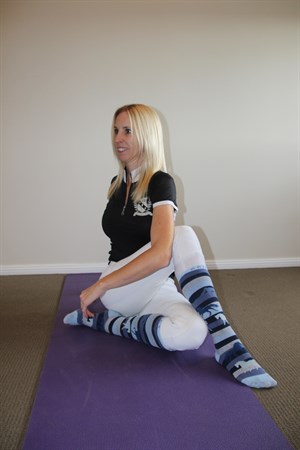
Thoracic twist.
Bend the left leg in front of you then cross the other right leg over the top. Turn your upper body towards the right and use your left elbow to push away the right knee. Repeat on the other side.
READ THE LATEST NEWS ARTICLES HERE









